Here’s the lowdown on which comets will brighten our skies this year.
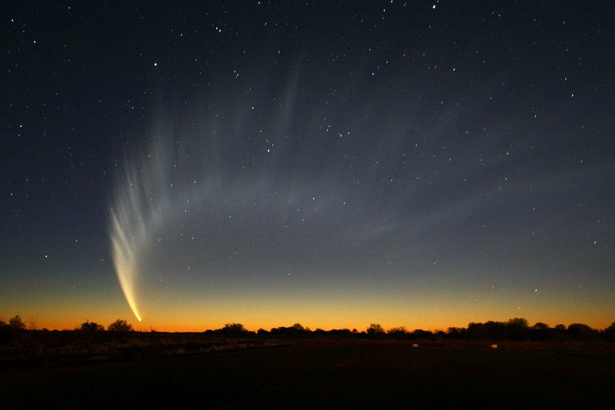
Comets have long been my favorite type of sky object. I'm a soft touch for their beauty and changeability. I like surprises, too. You never know exactly what to expect when you point telescope at one. Changes in brightness, color and tail length reveal just how dynamic these objects are. Fragilely composed of honeycombed dust and ice, a comet is liable to crumble into a beautiful mess at any moment, especially when passing near its nemesis, the Sun.
Each year I eagerly look forward to the next batch of returning comets and maybe a bright discovery or two. Some years are comet-rich. Others, we barely scrape by. If you think 2019 skimped on bright comets, you're right. But get ready for 2020 — it may be even leaner.
Looking Back, Looking Ahead
Last year, amateur and professional astronomers discovered about 50 new comets (some still await confirmation), and recovered 17 returning visitors. Not a single one of the new discoveries was bright enough to see in amateur equipment, save for 2019's most famous visitor, interstellar comet 2I/Borisov. A few fortunate souls with 16-inch, and larger, telescopes scrounged up this 14.5-magnitude object in late December.
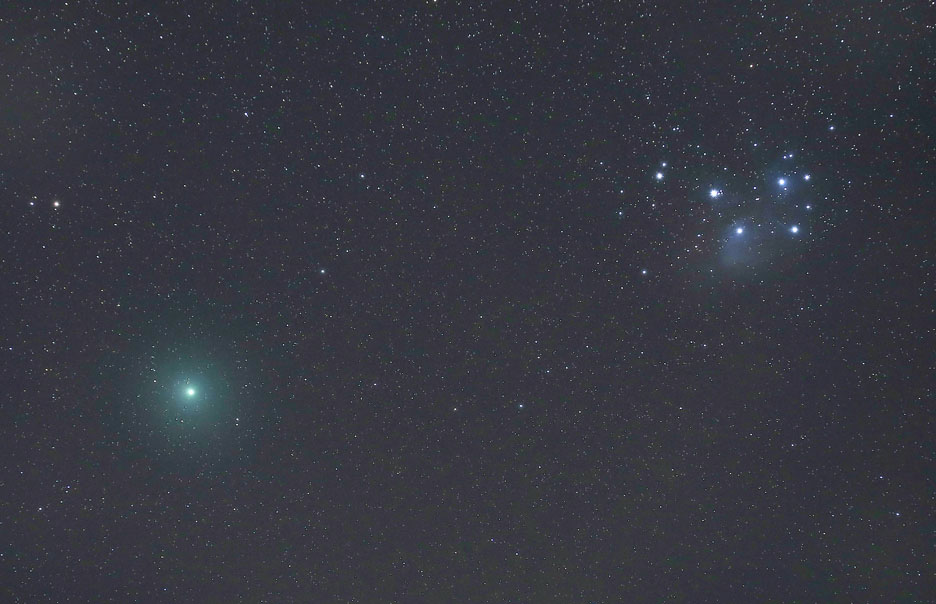
Bob King
Bright comets in 2019 included 46P/Wirtanen — a 5th magnitude holdover from 2018 — and long-period Comet Iwamoto (C/2018 Y1), which reached 6th magnitude last February. Comet Africano (C/2018 W2) pulled through at a respectable 8th magnitude in late September, while Comets 38/Stephan-Oterma, PanSTARRS (C/2016 M1), 64P/Swift-Gehrels, and PanSTARRS (C/2017 T2) achieved magnitude 10.
In 2020 there'll be three relatively bright comets gracing the sky: PanSTARRS (C/2017 T2), 2P/Encke, and 88P/Howell. Encke's Comet will be visible only from the southern hemisphere within two months of its June 26 perihelion. Thanks to its short period (just 3.3 years) many amateurs have already seen this comet on multiple apparitions.
Comet 88P/Howell will reach 9th magnitude around perihelion on September 26, but for northern latitudes will be poorly placed low in the southwestern sky at dusk. Comet-hungry northerners should instead focus their attention on C/2017 T2, which peaks in May at around magnitude 8 as it plies the circumpolar sky. Let's face it. We desperately need another Hale-Bopp!
PanSTARRS (C/2017 T2)
C/2017 T2 was discovered by the PanSTARRS-1 survey telescope back in October 2017. At the time the comet was nearly as distant as Saturn, and glowed feebly at magnitude 20. Astronomer Carl Hergenrother describes it as a dynamically new, long-period comet from the Oort Cloud, on its first trip around the Sun since the infancy of the solar system.
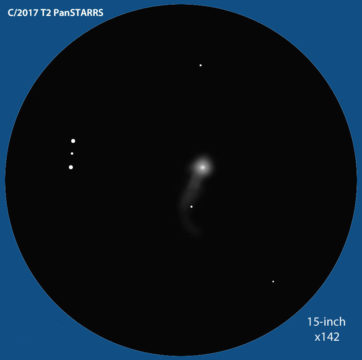
Bob King
Exotic forms of ice on these "fresh" comets often vaporize or sublimate at a great distance from the Sun, resulting in a sudden increase in brightness — at first. But after the initial outburst, they're famous for fizzling. Do the names Kohoutek or ISON ring a bell? Both harken from the Oort Cloud and neither lived up to expectations.
Barring an unexpected outburst, T2 should glow at magnitude 8 around the time of its May 4 perihelion, and remain nearly that bright for the entire month as it travels from Camelopardalis to the Bowl of the Big Dipper. From a dark sky, the comet should be easily visible in 50mm binoculars and remain in view the entire night from mid-northern latitudes. Unless a new and brighter comet is discovered, T2 will be our best shot in 2020.
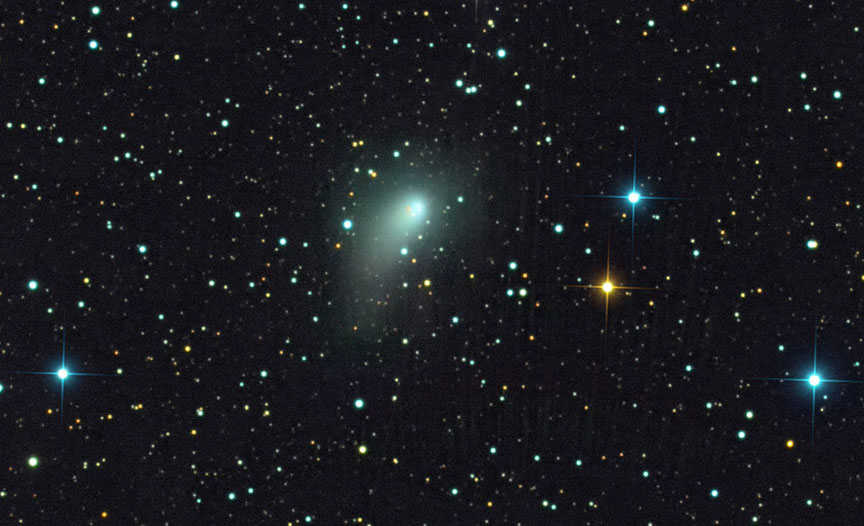
Rolando Ligustri
Observers in the southern hemisphere should get their first look at the comet in late June when it appears low in the northern sky, in Canes Venatici. The comet sticks around through August, remaining as bright as magnitude 10.5 as it glides across southern Boötes. For now, T2 is a small, condensed object of magnitude 9.5, with a silky, south-pointing tail about 2′ long. An 8-inch scope will show the comet easily.
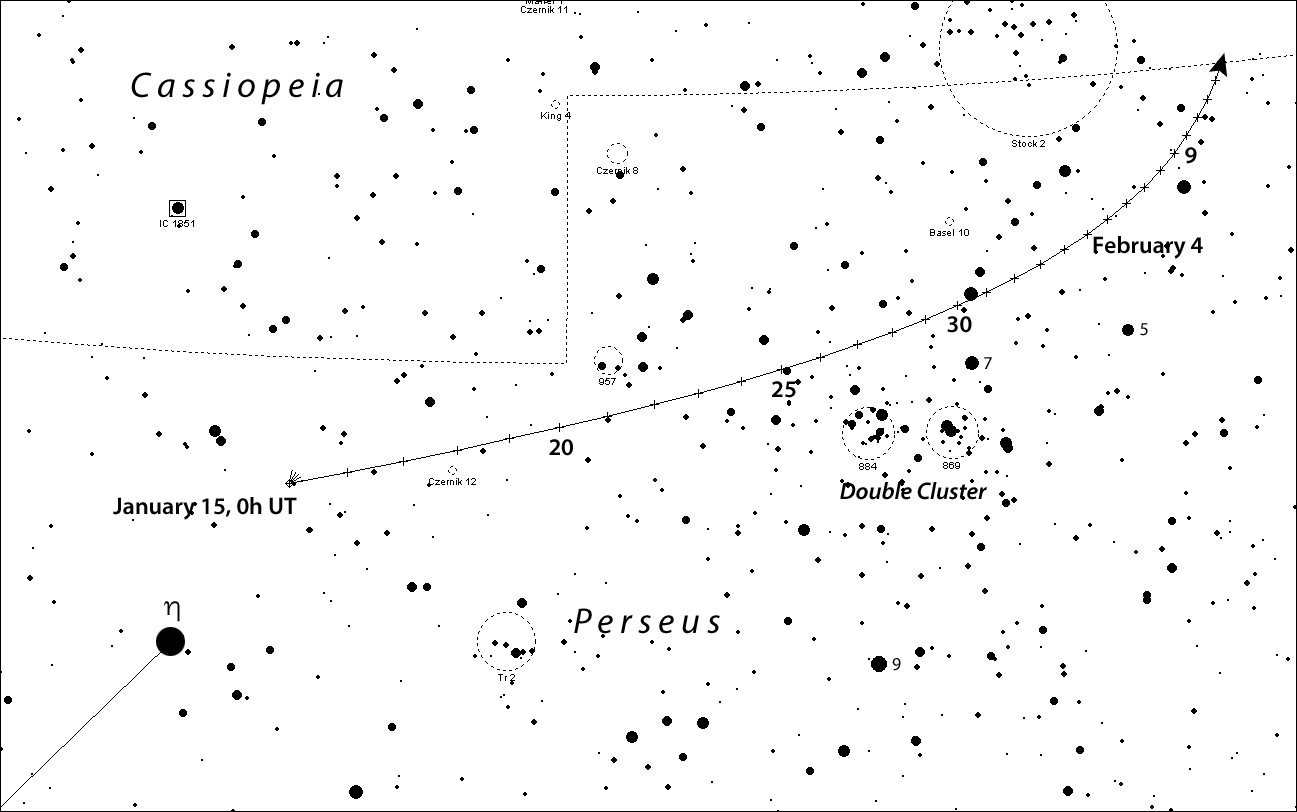
Chart generated using SkyMap software
Astrophotography alert! The comet skirts the famed Double Cluster in Perseus from January 24th through the 29th, passing within about 0.5° of the cores of NGC 869 and NGC 884. Don't miss this striking double-double conjunction!
2P/Encke
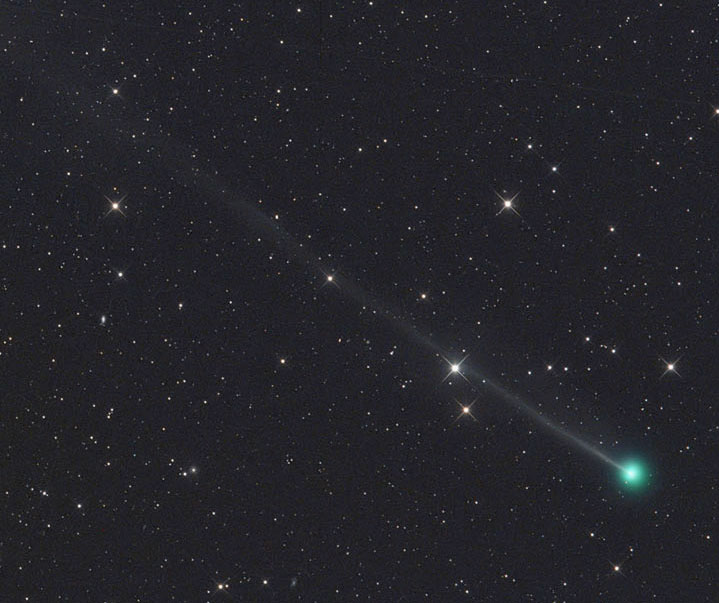
Gerald Rhemann
First seen by French astronomer Pierre Méchain, in 1786, Comet Encke was only recognized as a periodic comet in 1819, when German astronomer Johann Encke computed its orbit. Like Halley's Comet, Encke is named for the person who calculated its orbit rather than its discoverer. Enke's Comet has a period of just 3.3 years, and this year will mark its 64th apparition. I've seen it at nine returns starting in 1980 and most recently viewed it in 2017. In 2023, we can look forward to an apparition that'll be favorable for both northern and southern hemispheres.
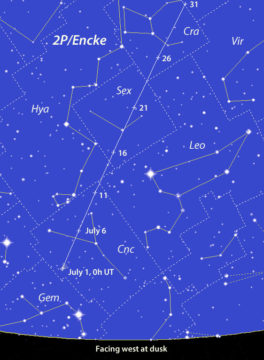
Chart generated using SkyMap software
Perihelion this year occurs on June 26. By early July, skywatchers at southern latitudes will nab the comet shining around magnitude 7 to 8 as it crosses Cancer in evening twilight, passing just 15′ south of the open cluster M67 on July 7. Moving rapidly eastward, the comet fades quickly, dimming to 11th magnitude by month's end.
88P/Howell
Discovered by American astronomer Ellen Howell, in August 1981, this year's will be the comet's 9th observed return. Occasional close approaches to Jupiter have resulted in the comet's perihelion distance decreasing in recent decades. Amateurs may get their first look at 88P in early May as it emerges in Virgo, glowing weakly at magnitude 12. On May 20 it passes a mere 10′ north of the close double star Gamma (γ) Virginis, and on September 4, slides a similar distance south of globular cluster NGC 5897, in Libra.
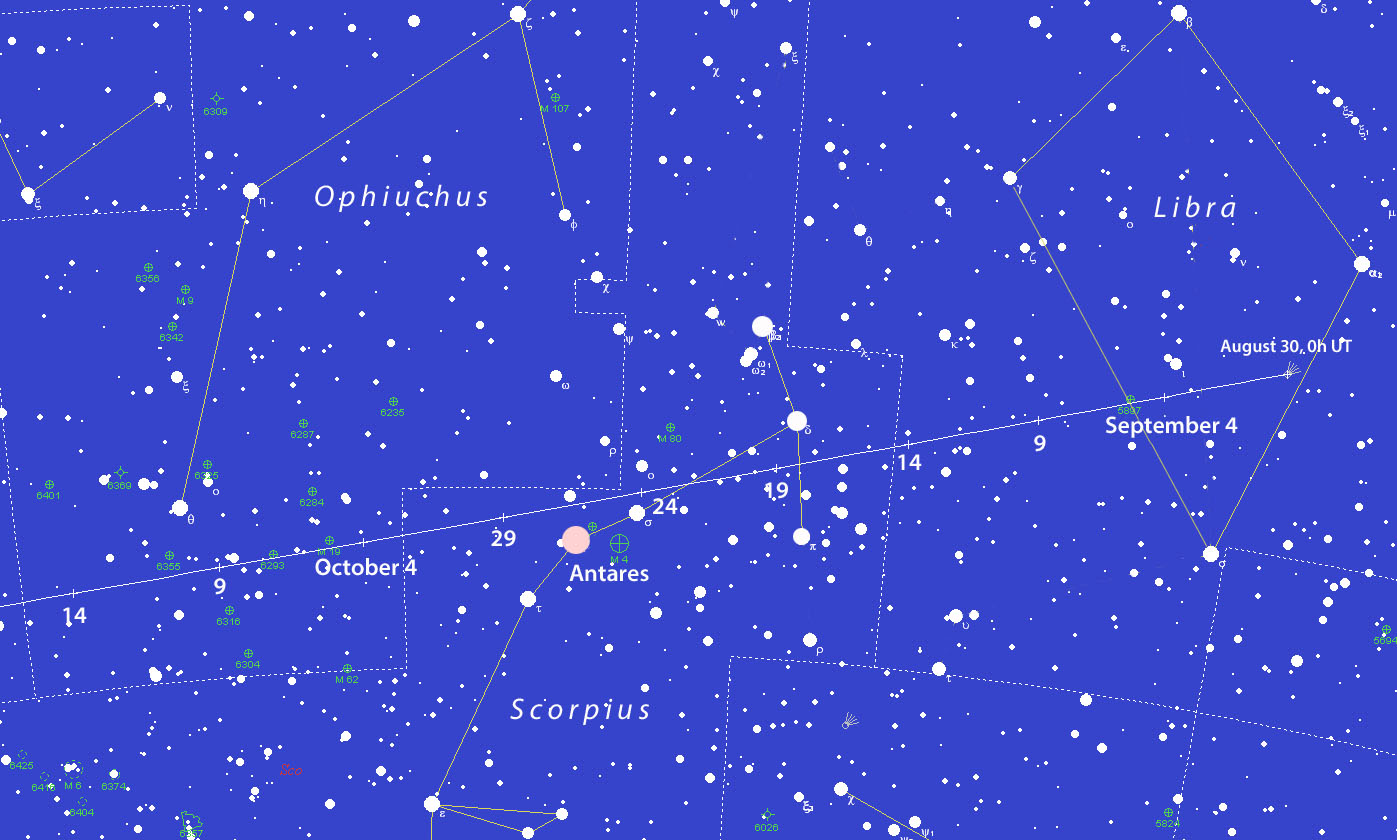
Chart generated using SkyMap software
Perihelion occurs on September 26 when 88P passes just 1° north of Antares, in Scorpius, and peaks at around 9th magnitude. Although the comet will be visible from mid-northern latitudes throughout autumn, it remains low in southwestern sky at twilight's end as it tracks across the southern constellations Ophiuchus and Sagittarius. Observers in the southern hemisphere will get the best views.
29P/Schwassmann-Wachmann
Go ahead, say it out loud with all the German accent you can muster — SHVAS-maan VACH-maan. And don't forget to clear your throat on the "ACH." 29P/S-W is subject to unpredictable outbursts which can raise the comet's nominal magnitude 16 to as bright as 10.5. Though varying in brightness, several outbursts occur each apparition, which is the reason some amateurs (including me) have seen this comet on more returns than any other. Chances are it'll blow again in 2020.
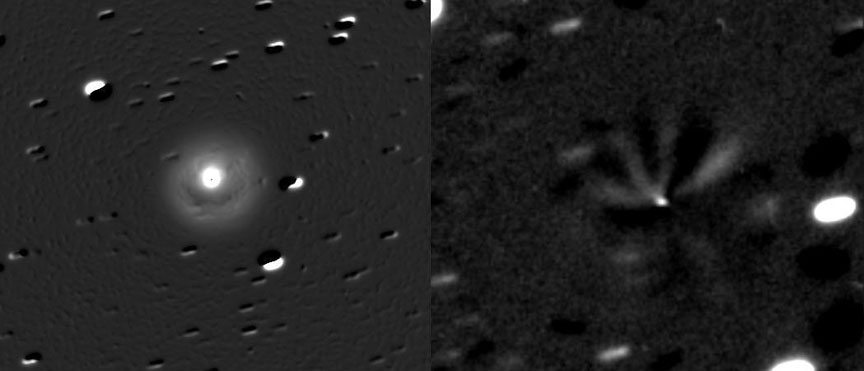
Juan LaCruz / CC BY-SA 4.0
Each outburst provides an opportunity to see one of the most distant comets visible in amateur telescopes. 29P/S-W orbits between 5.7 and 6.2 a.u. from the Sun, tens of millions of kilometers beyond Jupiter. Dr. Richard Miles, Asteroids and Remote Planets section director for the British Astronomical Association, attributes the outbursts to pressurized pockets of carbon monoxide and methane that erupt explosively as cryovolcanoes from solar heating. If you happen to catch 29/S-W early in an outburst, it resembles a bright, compact planetary nebula. To keep tabs on it so you don't miss a blowup, subscribe to the Comets Mailing List or visit the ALPO Comet Blog or Seiichi Yoshida's Weekly Comets Update.
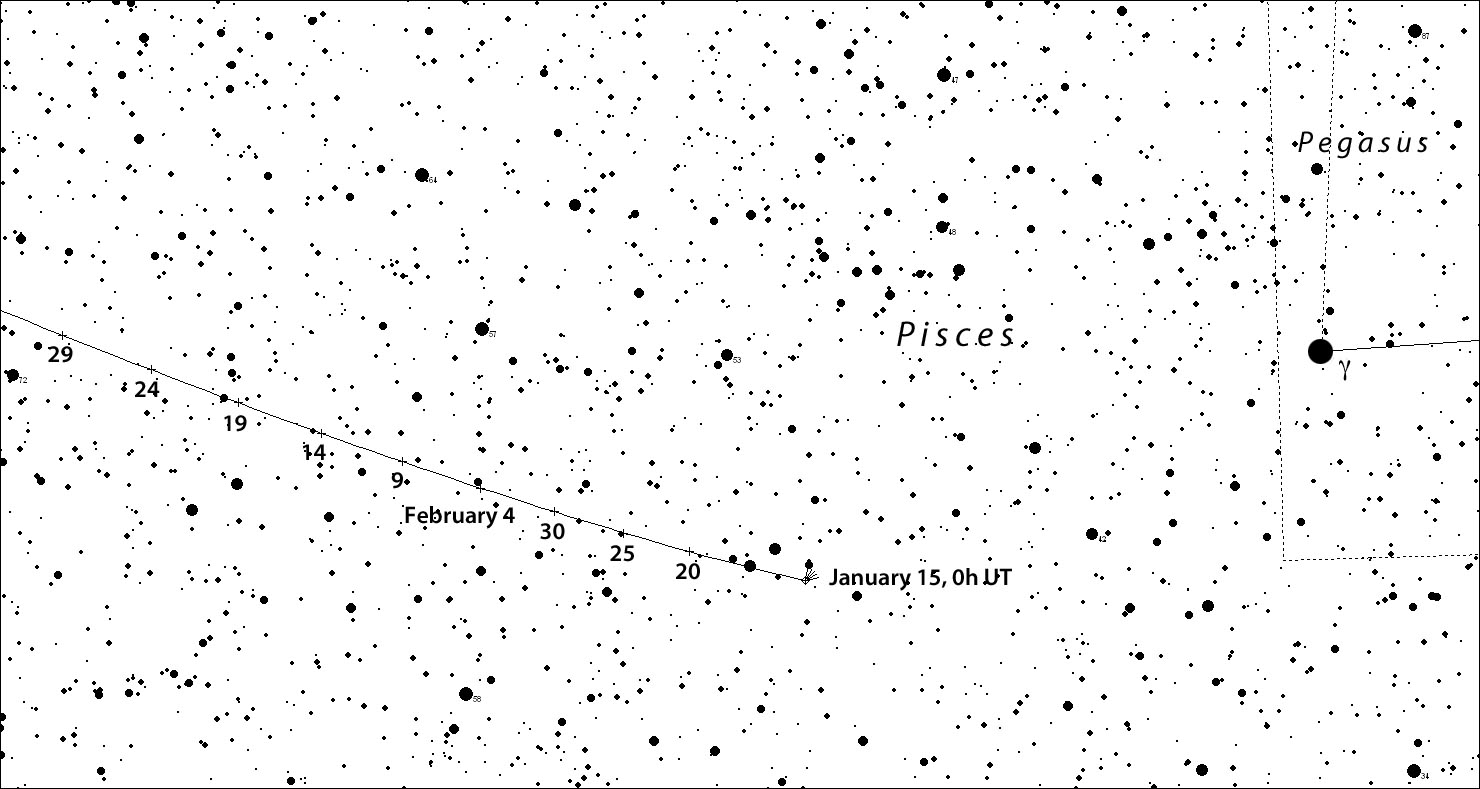
Chart generated using SkyMap software
The comet currently locates in central Pisces and is well placed until the beginning of March. After its conjunction with the Sun in mid-April, 29P/S-W returns to the morning sky in late June in Aries. Its high declination will improve the visibility of even modest outbursts for northern-hemisphere skywatchers.
Watch-worthy Lesser Comets
- Comet ASASSN (C/2018 N2) — Winter — This holdover from 2019 still hangs in at 12th magnitude, but is fading. It's ell-placed in western Andromeda. Locator map.
- 289P/Blanpain — Winter — A small, extremely faint comet that occasionally outbursts and increases brightness by up to 9 magnitudes. Currently close to Earth (within 0.17 a.u. throughout January) and racing from Cassiopeia through Camelopardalis in the coming week. No sign of activity yet. Locator map.
- 141P/Machholz — Fall — This comet was discovered in 1994, when its nucleus split into five pieces causing a brightness surge. Two fragments returned in 1999, but only one was observed in 2005. Who knows what we'll see, if anything, this time around, but it may surprise again. 141P may be visible in the early evening sky during November and December, as it zips from Scutum to Sculptor. Locator map.
- 17P/Holmes — Fall 2020/Winter 2021 — I'll never forget the comet's 2007 outburst when it rocketed from magnitude 14.5 to naked-eye visibility. When I first saw it on October 24, it looked like a bright, yellow star. Over the coming nights, Holmes ballooned into an amazing sight. The comet underwent a similar outburst in 1892, and may again when it comes to perihelion in February 2021. It's only expected to brighten to magnitude 14 by year's end, but I include it because you just never know. Locator map.
 1
1









Comments
Ron Kramer
January 22, 2020 at 11:00 am
My recent C/2017 T2
https://scontent-ort2-2.xx.fbcdn.net/v/t1.0-9/81988157_10218621727527213_1958249849954500608_o.jpg?_nc_cat=102&_nc_ohc=27Lqz2l--tQAX8F3Vke&_nc_ht=scontent-ort2-2.xx&oh=54074f0b456b07571f745d30ae2eea82&oe=5E99AD50
You must be logged in to post a comment.
You must be logged in to post a comment.